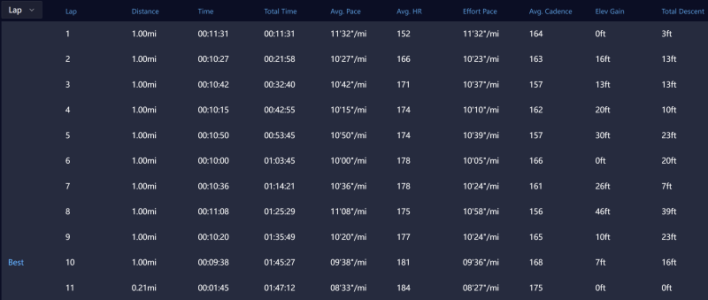>>My PT got me into r/w/r. I never looked backed! That was 2019, I have had no serious injuries since.
And Galloway states that his initial goal was training without injuries, which it seems to do.
My 2-cents worth: In the past, I've run between the water stops and have walked through water stops as the walk part, which meant roughly 1-mile runs with a minute or so of walking. And for the rD races, any character stops were also rest breaks. That mostly worked, but I was mostly walking the second half of the full.
As of the beginning of this year, I've been more diligent about a true RWR pace. I started with a longer run interval and had to dial it back (whatever I mentioned in my training log) and at the moment have 45/45 programmed into my watch, and that is what I used for the SS 10-miler.
I think the "trap" for RWR is feeling good at the beginning and running longer than you should before taking a walk break. So to test things out, I've made myself deliberately take the walk breaks early in my training runs, and that seems to pay dividends at the end of the run.
That said, there were times during the 10-miler and this week in the neighborhood where I was in a rhythm and ran through a walk break, but I then took the next walk break that came up. And, there were times when I extended a run segment by ten seconds or so and shortened up the walk by an equal amount and vice versa. Doing that, it all evens out in the end.
I can report that I was severely undertrained for SS, but was still able to do run intervals at the end of the race. I'm sold on it, and will continue to use it, but I will be experimenting with different intervals as I get more trained up. As
@Naomeri stated, if it works for you, then it is a good interval to use.
YMMV

